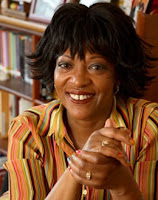Remembering Detroit-Part 1
 Two anniversaries happened within the past couple of weeks that I would briefly like to note.
Two anniversaries happened within the past couple of weeks that I would briefly like to note.Deemed at one point US 10 by the US Govt., then later M-1, Woodward Avenue was developed as a road that would go from Detroit (starting at Jefferson Ave., near the Detroit River, where you can see across to Canada) to Pontiac (where sections of Woodward are still known as "The Loop.") Woodward Avenue stretchs across 22 miles of an old road "where Indian moccasins padded and cattle trod the Saginaw trail, giving way to horse-drawn carriages and then automobile tires speeding up the world's first interurban 'superhighway.'"~Susan Whitall
But was is really important aren't the dates or size of Woodward, but rather the influence that the road has had, and maybe more importantly the people who have walked or driven over this road. It was a foot and horse beaten path forged by many native peoples of this land long before the white men came. It was a road trod upon by French Fur traders, who founded the city in 1701. Carriages and Bicycle wheels, which turned into automobiles wheels have driven over the road, changing it from dirt, to wood plank, to a paved, smooth black.

Woodward is still beautiful to me, even though I see it 4 or 5 times a week. I still look for my favorite buildings on Woodward with each drive, the entertainment: the Fox Theater, Hockey Town Cafe, Comerica Park; the arts: Detroit Institute of Arts, Detroit Public Library (Main Branch), Center for Creative Studies, Wayne State University; and the houses of God: Cathedral of the Blessed Sacrament, Church of St. Paul, National Shrine of the Little Flower.
I would be doing Woodward a disservice if I did not note how it has changed. There are signs of the times, fast food places, adult peep shows, dance clubs, bar
 s, familiar restaurants, and bookstores: The Onion Roll Deli, John Kings' bookstore-Ferndale outpost, the Sign of the Beef Carver, Hunter House hamburgers, even Borders' imposing many floored sturcture overlooking Woodward.
s, familiar restaurants, and bookstores: The Onion Roll Deli, John Kings' bookstore-Ferndale outpost, the Sign of the Beef Carver, Hunter House hamburgers, even Borders' imposing many floored sturcture overlooking Woodward.But all of it is beautiful in that it belongs to Woodward. The very name suggests movement, someone once said, Woodward. And I believe that the people of these parts have always believed that. Woodward is part of the motor city, a city of movement and
 possibilities.
possibilities.Woodward also is famous for many events: Martin Luther King Jr. 's original "I Have a Dream" Speech (given on Woodward in June 1963, where as the famous D.C. speech was in August 1963); many protests in times of sufferings, and parades in times of joy, like the parade down Woodward after WWII ended; and the Woodward Dream Cruise among many things.

I am proud of Detroit when I think of the heritage and history that evolves just around one little strip of road whose construction began 200 years ago this year. Cheers Detroit
For more info on the history of Detroit.



Comments
Have you been to GreenLantern-- not on Woodward but off of John R and 12 mile in Madison Heights? Best pizza in existence.
Yeah, I love Woodward...it was one of the few things about MI that I missed when I was away...isn't that funny that you can miss something like a strip of road?